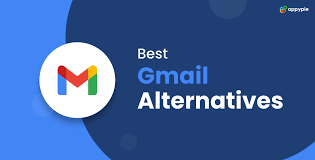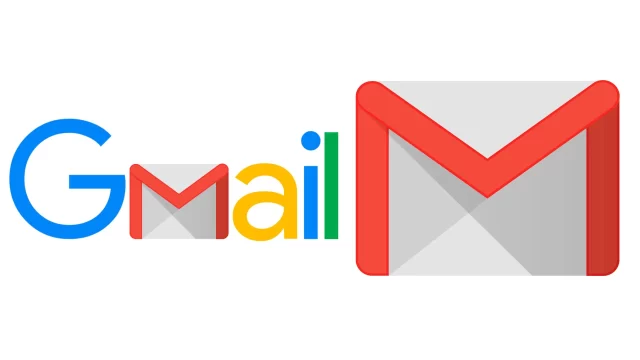Gmail, which stands for Google Mail, is a free email service provided by Google. Launched in 2004, Gmail has gained widespread popularity due to its user-friendly interface and robust features. The service allows users to send and receive emails, organize their inboxes, and access various Google services seamlessly. Known for its advanced search capabilities and integration with other Google applications, Gmail has become a staple in both personal and professional communication.
Creating a Gmail Account
To use Gmail, an account must be created. The following steps are typically followed:
- Visit the Gmail Website: Access to the Gmail sign-up page is usually achieved by navigating to the Gmail website at www.gmail.com.
- Click on “Create Account”: This option is typically found at the bottom of the login page.
- Fill in Personal Information: Users are required to enter details such as their first and last name, desired email address, and a password. The password must meet certain security criteria, usually including a mix of letters, numbers, and symbols.
- Verify the Phone Number: A phone number is often requested to help with account recovery and security. A verification code is sent to the provided number, which must be entered to proceed.
- Agree to the Terms and Conditions: Users must read and accept Google’s terms of service and privacy policy.
- Complete Setup: Once all the information is provided and verified, the Gmail account is created. Users are then guided through an initial setup process to familiarize themselves with the interface and features.
Using Gmail
After creating an account, Gmail can be used to manage emails efficiently. Here are some common tasks and functions:
- Sending Emails: To send an email, the “Compose” button is clicked. The recipient’s email address, subject line, and message content are entered. Attachments can be added by clicking the paperclip icon.
- Reading Emails: Incoming emails appear in the inbox. By clicking on an email, its content can be read. Emails can be categorized into primary, social, and promotional tabs for better organization.
- Organizing Emails: Emails can be organized using labels, folders, and filters. Labels are created to categorize emails based on their content or sender. Filters can be set up to automatically sort incoming emails.
- Searching for Emails: Gmail’s powerful search feature allows users to find specific emails quickly. Keywords, sender names, or other criteria can be used to narrow down search results.
- Setting Up Gmail on Mobile Devices: Gmail apps are available for both Android and iOS devices. Downloading and installing the Gmail app allows users to manage their emails on the go.
Features of Gmail
Gmail offers a range of features designed to enhance the email experience:
- Integrated Search: Gmail’s search function is known for its efficiency. Users can find emails using keywords, dates, or other filters.
- Spam Filtering: A built-in spam filter automatically detects and moves suspicious emails to a separate spam folder.
- Conversation View: Emails are grouped by conversations, making it easier to follow the thread of a discussion.
- Integration with Google Services: Gmail integrates seamlessly with other Google services, such as Google Drive, Google Calendar, and Google Meet.
- Customizable Interface: Users can personalize their Gmail interface with themes and layout options.
- Smart Compose and Grammar Suggestions: Gmail provides suggestions while composing emails, including grammar and style improvements.
- Two-Step Verification: For enhanced security, two-step verification can be enabled, requiring users to enter a verification code sent to their phone in addition to their password.
Benefits of Gmail
The use of Gmail provides several benefits, contributing to its widespread adoption:
- Free Service: Gmail is provided at no cost, making it accessible to a broad audience.
- Generous Storage: Users receive a substantial amount of storage space for emails and attachments, reducing the need to frequently delete old messages.
- Accessibility: Gmail can be accessed from any device with an internet connection, providing flexibility in managing emails from different locations.
- Security Features: Advanced security measures, such as two-step verification and strong spam filters, help protect user accounts from unauthorized access and malicious content.
- Integration with Google Ecosystem: Seamless integration with Google’s suite of applications enhances productivity. Features like calendar invites and document sharing are easily accessible within Gmail.
- Efficient Organization: Tools such as labels, filters, and categories assist in organizing emails efficiently, making it easier to manage a large volume of messages.
- Regular Updates: Google frequently updates Gmail with new features and improvements, ensuring that the service remains modern and responsive to user needs.
Top 10 Alternatives Gmail

Introduction
Gmail has become one of the most popular email services worldwide, praised for its user-friendly interface and seamless integration with other Google services. However, various alternatives offer unique features and benefits that may cater to different user needs. In this log, a comprehensive look at the top 10 Gmail alternatives is provided, exploring their features, advantages, and suitability for various users.
1. Outlook
Outlook, developed by Microsoft, is a widely used email service known for its robust integration with Microsoft Office and other productivity tools. Users benefit from a clean interface and efficient organization of emails, calendar events, and contacts. Enhanced security features and powerful search capabilities contribute to its popularity.
2. Yahoo Mail
Yahoo Mail has long been a significant player in the email service arena. It provides a large storage capacity and a user-friendly interface. Notable features include disposable email addresses, which enhance privacy, and integration with Yahoo’s news and finance services. Customizable themes and filters are also available to streamline the user experience.
3. ProtonMail
ProtonMail is renowned for its emphasis on privacy and security. End-to-end encryption is provided to ensure that only the intended recipients can read the messages. The service, based in Switzerland, benefits from strong privacy laws. Users are provided with an intuitive interface and options for anonymous sign-up, making it an appealing choice for privacy-conscious individuals.
4. Zoho Mail
Zoho Mail offers a professional email service suitable for businesses and individuals. It features an ad-free interface and strong integration with Zoho’s suite of productivity tools. A focus on privacy and security is maintained, with advanced features like custom domain support and a powerful spam filter. The platform’s seamless integration with other Zoho applications enhances productivity.
5. Apple Mail
Apple Mail, the default email application for macOS and iOS devices, provides a polished and integrated experience for users within the Apple ecosystem. Features include support for multiple email accounts, integration with other Apple services, and a clean, minimalist design. Enhanced privacy features and the ability to manage email across different devices contribute to its appeal.
6. Mail.com
Mail.com is known for its extensive list of domain options, allowing users to select a personalized email address. The service offers features like unlimited storage and a user-friendly interface. Customizable mailboxes and integration with other services, such as cloud storage, enhance its functionality. It is a versatile choice for users seeking a personalized email experience.
7. Tutanota
Tutanota is another email service that emphasizes privacy and security. It provides end-to-end encryption and a focus on user anonymity. The interface is designed to be simple and intuitive, with features like encrypted calendar integration and secure search capabilities. Tutanota’s strong privacy stance makes it a suitable choice for users concerned about data security.
8. FastMail
FastMail is recognized for its speed and efficiency. It offers a clean interface and powerful organizational tools, including customizable folders and advanced search options. The service supports multiple email accounts and provides robust security features. FastMail’s focus on user experience and reliability makes it a preferred choice for many professionals.
9. GMX Mail
GMX Mail, based in Germany, offers a range of features, including a generous storage capacity and robust spam protection. Users can benefit from a straightforward interface and integration with other GMX services, such as cloud storage. The service supports multiple email accounts and provides various customization options, catering to diverse user needs.
10. Runbox
Runbox is an email service based in Norway, known for its strong privacy policies and user-friendly features. The platform offers encrypted email communication and an intuitive interface. Runbox provides a range of customization options and integrates with various productivity tools. Its commitment to privacy and security makes it a compelling alternative for users seeking a secure email service.
Conclusion
The diverse range of alternatives to Gmail reflects the varying needs and preferences of email users. Each service offers unique features and benefits, catering to different priorities, from privacy and security to integration with productivity tools. By exploring these top 10 Gmail alternatives, users can find an email solution that best aligns with their individual requirements and preferences.
Conclusion
Gmail has established itself as a leading email service due to its robust features, user-friendly interface, and integration with other Google services. The process of creating and using a Gmail account is straightforward, allowing users to benefit from a range of tools designed to enhance communication and productivity. With its advanced security features and continuous updates, Gmail remains a popular choice for both personal and professional email needs.










